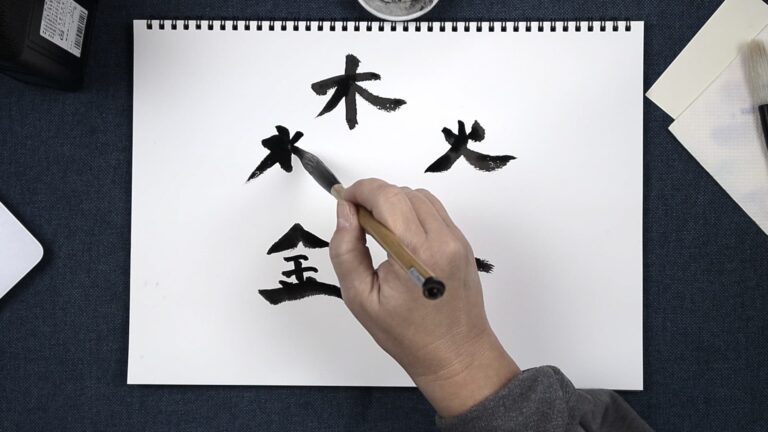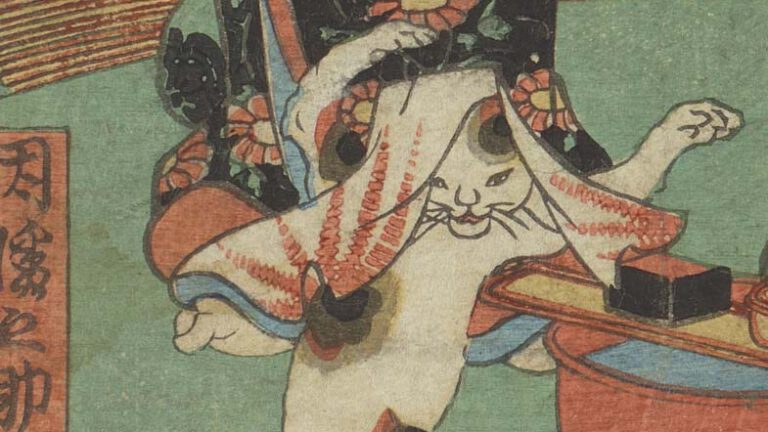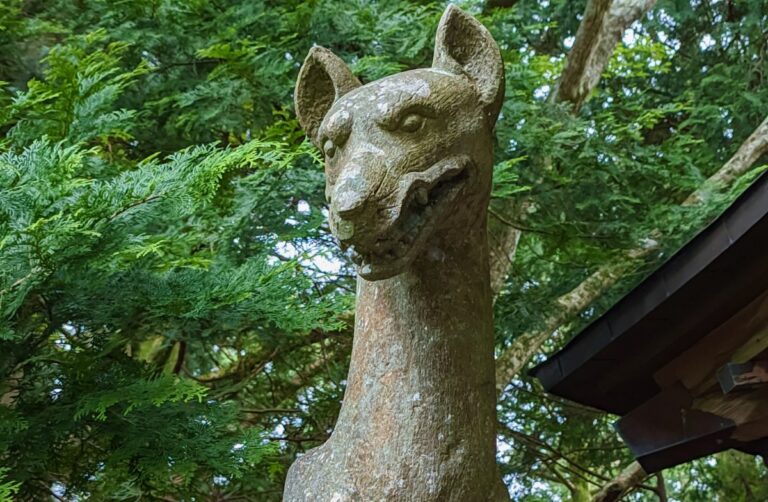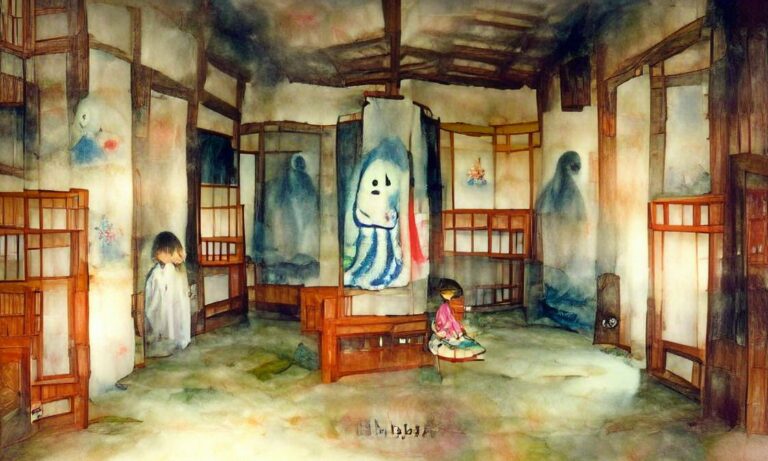The Hell Courtesan (Jigoku Tayuu) is a mysterious figure that appears in art and story in Japan since the 1600s. But who is this beautiful high ranked oiran who wears a kimono covered in images of hell? Today I’ll talk about her legend and relationship with the eccentric monk Ikkyuu.
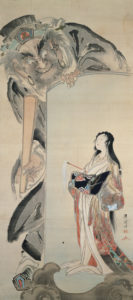
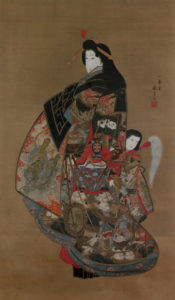
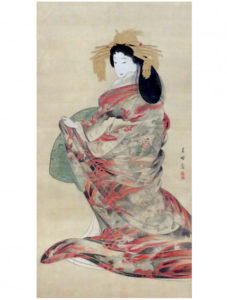
Imagine the scene:
A high level courtesan, or tayuu (大夫), is standing and peeking from behind a paper screen. All her fancy hair ornaments, the tortoise shell and boxwood combs, and coral hairpins and tinkling bells are missing and her long shiny hair hangs loose down her back.
Slightly disheveled, she’s wearing the usual layers and layers of kimono; gold, and crimson, ivory and black. Nothing out of the ordinary here. Except if you look closely at the design on the cloth you’ll see scarlet-colored flames licking up the black fabric and even the King of Hell, the furious Enma Daio (閻魔大王) himself. But on her blue, tied-in-the-front obi, you’ll notice the brocade image is of a Bodhisattva, a high being that has renounced nirvana in order to save all the souls on earth. This Bodhisattva is surrounded by squatting children who are stacking stones, as they must do in the afterlife.
But what is this lovely courtesan gazing at?
Why a monk, of course. Either drunken or mad, he is dancing wildly. His hands are thrown high overhead, mouth ajar, he’s kicking one leg high in the air, while the other is balancing on the head of a skeleton, a skeleton that is sitting and playing a beaten up stringed shamisen. All around them and even at the oiran’s (花魁) bare feet are more tiny skeletons also dancing in the throes of of some unknown (to us) ecstasy.
This is the image on a scroll painted by Kawanabe Kyousai in the late 19th century. No more tanuki, today let’s talk about Jigoku Tayuu (地獄大夫). The Hell courtesan.
Hey hey,
Remember the courtesans we talked about back in episode 61, called oiran, and how the very top level ones were called tayuu (大夫)? Well, today’s show is about just one of those very elite women of the night. She’s lovely and mysterious and she’s intriguingly called Jigoku Tayuu – the Hell Courtesan. You can find images of her all through the ages.
But she seems to often appear in artwork and story during times of turmoil, like at the end of the Edo Era and when Japan was transitioning from a feudal society to a modern state during the Meiji period.
Jigoku Tayuu’s First Appearance
So who is this perplexing figure – an oiran who wears a kimono covered in graphic images of hell? Let’s start at the beginning. She first appeared in an anonymous book of humorous short stories in 1672. The title was Ikkyuu kantou banashi (一休関東話). Ikkyuu’s Stories from the Kantou-Western Area.
Real quick: Ikkyu is a colorful topic that I really need to tackle this year. There is so much to say about Ikkyu-san. But if you don’t know anything at all, for the purpose of today’s episode, just know he was an eccentric Zen monk who sometimes did very un-monk-like things, eating meat and flouting celibacy being two of those things. He was also an brilliant poet.
So in one of the Ikkyu Kantou Banashi stories — which is also a kabuki play, by the way — it tells how the monk Ikkyuu-san visited a place called Sakai, near present day Osaka and met the Hell Courtesan. They had a little poetry battle, reciting witty versus back and forth, one upping each other as they went along.
Like Jigoku Tayuu would ask why such a holy monk as himself should be visiting the pleasure district? To which Ikkyuu would reply that since his physical body means nothing, both a temple in the mountains and the city are in effect the same place. Back and forth they went with the Hell Courtesan teasing in one of her pieces that there are none who avoid falling into hell, referring to all the men who had gone astray after falling in love with her.
Ikkyuu thought this was hilarious and was quite impressed with her talent. And I think that’s how that story ends.
More Recent Story of The Hell Courtesan
But there’s another more detailed and recent version of the same story by Santou Kyouden ( ). It was written in 1809, and it’s this one that is most remembered for creating Jigoku Tayuu’s popularity and the character as we know it today. I haven’t read the original Japanese, but here’s a summary of several English translations.
There once lived a daughter of a samurai named Otoboshi. She was quite young when her father died in battle and her family fled her home. However, they ran into bandits while escaping. Her mother was murdered and she and her older sister were sold off. Otoboshi ended up in a brothel in Sakai and eventually became one of the highest level courtesans there, a tayuu.
Otoboshi came to believe that the unfortunate state of her life was punishment for previous misdeeds in a past life. That’s when she changed her name to Jigoku and had images of hell embroidered on her kimono, hoping this would work as a kind of penance.
In this account, Ikkyuu hears about this Hell Courtesan and intrigued, decides to visit her at the brothel. However, seeing this poor shabby monk he is refused entrance. Ikkyuu gets a little obnoxious and is not only thrown out, but is about to be beat when Jigoku Tayuu shows up and invites him inside. There he asks for some hot broth, carp and sake. Monk’s at this time aren’t supposed to be eating meat or boozing it up. But he’s given what he asks for and proceeds to get sloshed.
Jigoku Tayuu thinks, okay this guy is pulling one over on me. He’s no famous monk. She decides to give him one more test before showing him the door. So she sends some dancers and musicians into his room to see what he does, observing from behind a paper screen or doors. Ikkyuu is like all right and he starts dancing with them. No doubt disappointed Jigoku Tayuu starts to leave when she notices the shadows on the paper screen look strange. She looks again and sees that all the dancers and musicians have turned into skeletons. All those beautiful people are now mere partying bones.
It is at this moment that she realizes that beneath the glamour and beauty of life is always death. We all die. Some stories have her gaining enlightenment at this moment and Ikkyu giving her a Buddhist whisk, called a hossu (払子) (more on that in a second) and a poem as payment for the night.
But other versions say how it is from then that she begins to study under Ikkyu who teachers her about impermanence and other Buddhist stuff. She has an ornate chair made where she sits and meditates daily. One day Ikkyuu returns and watches her meditate. Afterward, he announces that yes, she has attained enlightenment and he smashes the chair into pieces. You know: impermanence.
They remain in a kind of teacher and disciple relationship, for awhile. Some say Jigoku Tayuu wanted to renounce her profession and become a female monk, but Ikkyuu convinced her not to. Hmmm.
The Hossu
Back to that whisk-looking instrument she was given, the hossu. You’ll notice in some of the artwork of Jigoku Tayuu she’s holding it. In English it’s sometimes called a fly whisk. To me me looks like a short lacquered stick with a fluffy white tail on one end. I believe it’s symbolic of protecting the person who has it from desire and also indicates that the holder has the authority to teach the Dharma of the Buddha. It’s often passed down from one teacher to the next, so it’s very important. But it can also be used for shooing flies without killing them. In works of art I’ve seen it written that it shows the holder has attained enlightenment or satori. Hence, you’ll see Jigoku Tayuu holding a hossu in quite a few depictions of her sometimes calmly facing down the King of Hell.
Also, in most of the artwork her kimono is covered in images of hell: again the King of Hell, Enma Daio, various oni and other demons, as well as poor souls being beaten, skewered, and boiled in iron pots. Very out of place for such an elegant woman. Although her obi, that’s tied to the front, as you’ll remember all oiran do, will have some holy figure on it, a Bodhisattva with other heavenly attendants or something.
Kawanabe Kyousai
One artist who made a playful interpretation of the Hell Courtesan’s garments was Kawanabe Kyousai (川鍋暁斎). Instead of fire running up the kimono he painted red coral. He also added other auspicious things like gold coins and jewels and even the Seven Lucky Gods. So a nice variant there.
Her Death
But how does the story end? With Jigoku Tayuu’s death at a young age, of course.
She continues her life as a tayuu, at peace with herself, realizing her body is impermanent, no attachments, meditating daily and generously giving alms. But eventually she falls seriously ill. On the 45th day of her sickness she predicts that she will die on that day and she sends for Ikkyuu.
After he arrives, Jigoku Tayuu uses the last bit of strength she has to play the koto and sing. She finishes the song and drops dead right there. Ikkyuu tells her people to dress her in a simple white kimono and leave her in the fields. They object, but a note is found by one of Ikkyuu’s disciples under her pillow that says that’s what she wanted.
There’s also a version of the tale that has her last poem being instructions on what to do after she died. Which was to leave her out in the field so her body could feed the starving dogs. Which they did.
And then there’s a story that ends with Ikkyuu going out into the field quite a bit later and finding her bones, but when he picks them up they’re all connected, thus proving she had indeed attained enlightenment.
And that’s the bitter sweet story of Jigoku Tayuu or the Hell Courtesan.
Her Final Poem
Let me leave you with her final poem.
Ware shinaba 我しなば
Yakuna, uzumuna 焼くなうずむな
No ni sutete 野に捨てて
Uetaru inu no 飢えたる犬の
Hara wo 腹を
Koyase yo 肥やせよ
When I die, do not burn me, do not bury me
Throw me into a field, so that I may fill the belly’s of the starving dogs.
Thank you so much for listening. Stay safe and well, and I’ll talk to you again real soon.
Credits
Intro and outro music by Julyan Ray Matsuura

